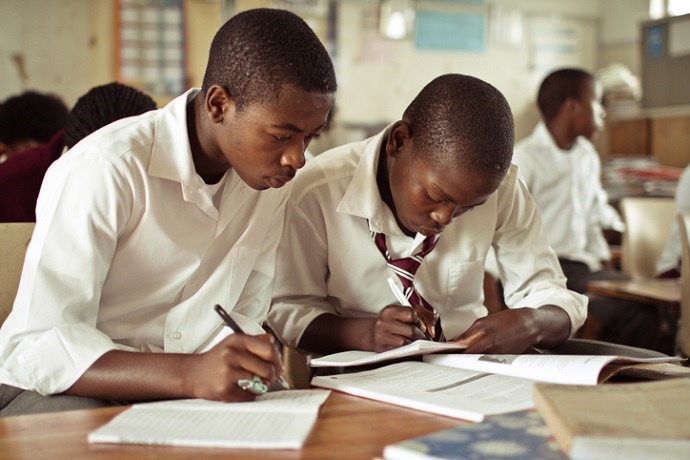
South Africa introduced a child support grant 21 years ago in 1998, four years after the advent of democracy. The grant has been a human rights milestone and a mark of progress in the full realisation of children’s rights.
It is one of the most comprehensive social protection systems in the developing world, reaching over 12 million children a month.
It has evolved over the years to include children up to 18 years old. But, what happens to those over 18 who have “graduated” from receiving the child support grant. We term these young people post-child support grant beneficiaries. In our study we wanted to know what the longer-term outcomes for them are.
While the monthly child support grant of R420 (US$29,65) per child has several positive effects during childhood, especially on nutritional status, the study found that these effects don’t thread through into early adulthood. This is likely because of failures of other human capital investments in the childhood years.
The grant, as a policy instrument, cannot work alone in ensuring that young people thrive and succeed.
While it is a critical investment and has contributed to alleviating the effects of childhood poverty, more is needed to realise the “demographic dividend” -– a time of economic productivity realised as a result of a large young population – provided that population is healthy and well educated.
South Africa is essentially a hostile place for youth, particularly those from poor households, due to high youth unemployment, inaccessible, unaffordable post-secondary education and sustained multidimensional poverty. Long-standing inequalities on the basis of race, gender and geographic location also persist.
So it is not realistic to expect young people to fully support themselves once they turn 18.
Currently, the lack of support services to complement the child support grant undermines the childhood gains of the grant, and keeps young people stuck in poverty.
Also see: 'I used to scream and shout, now I speak calmly': Why social grants need to be supplemented by family intervention programmes
What is your opinion on the topic? Share your story with us, and we could publish your mail. Anonymous contributions are welcome.
Structural problems
In particular, the structural features of the education system and labour market undermine the positive effects of the child support grant.
Our research was framed by two questions: What effect does the child support grant have on education, health and employment outcomes later in life? And what factors in the life course of an individual shape these outcomes?
The longitudinal research uses the National Income Dynamics Study to trace young people over nine years. We identified a sample of 1100 young people aged between 21 and 22 years in 2017. These young people would have been eligible to receive the grant in 2008. We have data for them every two to three years between 2008 and 2017.
Using this data we sought to understand demographic or life-course factors that would explain later health, education and employment outcomes.
The study showed that the post-child support grant beneficiaries were no more likely to report better health, be employed or have completed high school, than their counterparts who did not receive the grant (but were eligible).
The structural features of the education system and labour market continue to undermine the potential for young people from poor backgrounds to succeed. As children, these young people would most likely have attended low-income schools, which typically generate poor quality education outcomes.
This means that they leave the schooling system without the literacy and numeracy skills required for entry-level positions in the labour market. Combined with this is low job growth and the fact that the sectors of growth in South Africa’s labour market require higher skills levels.
In spite of the grant and its important contribution to early childhood development, there won’t be gains seen in education, employment or health if the deeper problems in education and the labour market are not resolved.
Further, our data shows that traumatic events, such as the death of a family member or unemployment in the household, negatively impact on the attainment of better outcomes.
These can affect a young person’s ability to perform well in exams and can lead to disruptions in care arrangements. This highlights the need for access to support services to mitigate the negative impacts of traumatic life events.
Interventions should target structural poverty, and also ensure that support services are available to complement cash transfers, like the child support grant.
Also see: OPINION: What the 2019 Budget means for education, child grants and your family’s wellbeing
Support interventions
Our study argues that, in addition to addressing the structural factors mentioned above, three support service interventions should complement the provision of the child support grant. These interventions should:
Target children who experience the death of a caregiver in the home, providing support at school and in accessing mental health services;
Invest in employment support. Our other research shows that this could support more effective transitions to jobs.
Ensure that child support grant beneficiaries are speedily identified when they are at risk of failing or repeating grades and given necessary support. Once beneficiaries complete high school, they should be automatically linked to services (such as the National Student Financial Aid Scheme) so they can pursue tertiary studies.
Child support grant beneficiaries are managed in two systems across two departments – the Social Development and Basic Education systems. This provides an opportunity to flag children who are at risk, provided these systems are linked.
Partnerships between these government departments, as well as between schools themselves and local welfare and support services, are critical to ensuring holistic support to youth who struggle at school.
Realising the demographic dividend in South Africa relies on investments to alleviate the effects of childhood poverty but also, to develop human capital through quality education. The recommendations arising from this research need political will to be realised.
Human capital development should be prioritised for youth (through the education system). Further cash transfers, like the child support grant, can be bolstered by additional support services to ensure that children move with ease into young adulthood.![]()
Lauren Graham, Associate professor at the Centre for Social Development in Africa, University of Johannesburg, University of Johannesburg
This article is republished from The Conversation under a Creative Commons license. Read the original article.
Chat back:
What is your opinion on the topic? Share your story with us, and we could publish your mail. Anonymous contributions are welcome.




 Publications
Publications
 Partners
Partners















